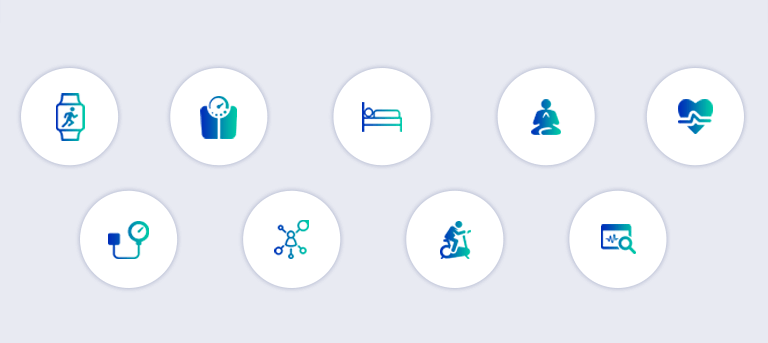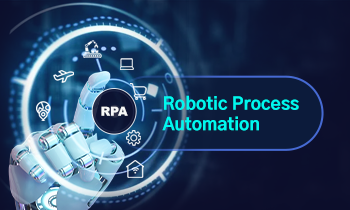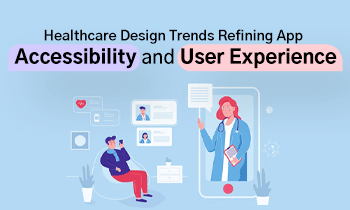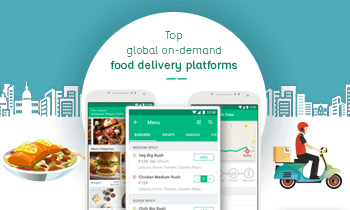The Internet of Things (IoT) is changing the way humans interact with devices. This connection is further enhanced by connecting humans and devices in the healthcare department. IoT’s interaction with AI (Artificial Intelligence) has quite certainly taken the world by storm.
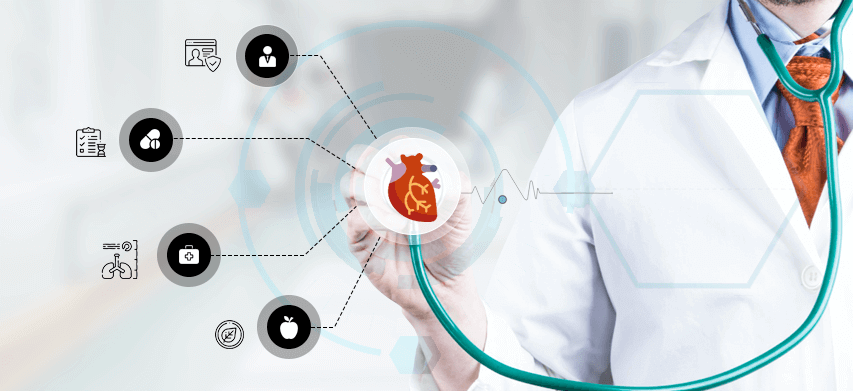
The merger of IoT and AI has not only taken up the task of executing routine and tedious tasks in quick time, but it has also managed to find out ways that improve the output in terms of efficiency, accuracy, and productivity. Right from manual works like data analysis to processing, IoT and AI seem to work it around quite well together.
Blending of IoT with Healthcare – What it Signifies?
The CES 2018 presented groundbreaking innovation in diagnosing, treatment, and monitoring illnesses owing to the mind-bending advancements in healthcare. How has that happened? Due to the merging of AI and IoT in this sector, patients are now talking to chatbots and AI assistants.
Not only that, but these chatbots and assistants are also providing insights regarding the disease and the most probable cause of it. Doctors now breathe a sigh of relief all around the world as patients interacting with chatbots are freeing up their time. On the other hand, no patient goes unnoticed or unattended thereby ensuring that every patient gets the right diagnosis.
IoT in Action in the Hospital Setup
Hospitals are acknowledging the endless benefits of the Internet of Things in healthcare and are thus finding means to incorporate it into everyday medical procedures. Major companies are also not shying away from investing in this venture, considering the promising future it holds in terms of revenue.
For instance, Microsoft has come up with Microsoft Azure cloud platform that aims to deliver cloud-based services to many sectors including healthcare. This is just one example of the incorporation of IoT-AI with healthcare. Companies like Philips, GE Healthcare, Cisco Systems, IBM Corporation, etc are not far behind when it comes to the Internet of things application in healthcare.
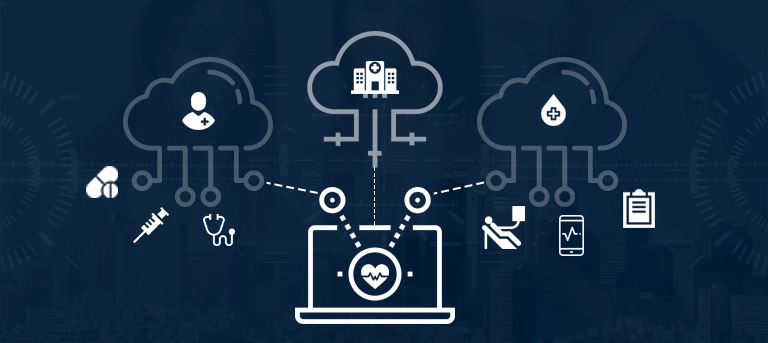
The applications are endless but one is left to wonder, how exactly is IoT benefiting the healthcare industry?
We tell you how.
- Better Outcomes of the Treatment One Undergoes
IoT in healthcare grants vital access to the caregiver that enables them to make informed decisions. This is possible due to the connectivity of healthcare solutions via cloud computing. Decisions thereby made are evidence-based and this ensures that the healthcare provisions are provided on time and the outcomes are thus bettered.
- Significant Reduction in Costs and Expenditures
When healthcare services are provided to patients through cloud computing, monitoring a patient can be done on a real-time basis without actually visiting the doctor. Major chunks of expenses borne by hospitals are the medical stays and readmissions. Owing to the Internet of things in healthcare, these costs are guaranteed to be cut down enormously.
- Fewer Errors
The most important aspect of IoT is the collection of data. Due to the accurate collection of data, patients can now be monitored on a regular basis and healthcare providers are able to get an access to real-time data. This, in turn, leads to diseases being dealt with more effectively. Decisions made to treat a disease are now more direct in approach and system costs are reduced. All this results in the error margin minimized drastically in patient care.
- Enhanced Disease Management
Disease management was supposed to be one of the most tedious processes, as it requires constant monitoring of the patient’s condition. With IoT involvement in healthcare facilities, monitoring patients on a continuous basis is now possible.Diseases can now be treated based on the real-time data thus making is possible to treat them before they reach an incurable stage.
- Improved Patient Experience
The connectivity that is achieved due to the merging of healthcare with IoT puts emphasis on the needs of the patient. Real-time data analysis helps doctors take precautionary measures in advance. False prescription incidents are also minimized and treatment levels are enhanced considerably.
- Fitness Wearables

As you may have noticed, fitness wearables are now a legitimate market. People are increasingly becoming more aware of fitness and they are not hesitating in investing on products that help them keep a track of their own health.IoT, which is known to collect and transfer information, can help provide meaningful insight based on data that has been collected on a regular basis. However, that is understood that the need for huge data analytic equipment is necessary.
- Effective Management of Drugs
Another expensive aspect of the healthcare industry that benefits from IoT is the creation and management of drugs. Internet of things in healthcare enables the smooth functioning and management of drugs and their prescriptions. This also holds the potential to end fraudulent prescriptions.
- Biometric Sensors
Clinical-grade biometric sensors now find a very high spot of priority in the medical field. This is because they can generate accurate medical data which is also personalized. It is a groundbreaking advancement as these sensors are seemingly the epitome of non-invasive body monitoring. They can accurately track sleep patterns, heart rate, calorie-intake, the quality of sleep, and many more such advantages. Biometric sensors benefit the healthcare industry in more than one way and thus, is a fine example of IoT applications in healthcare.
Potential Barriers to Effective Outcomes
Now that we have an overview of the various ways in which the healthcare industry benefits from the Internet of Things, we cannot turn a blind eye towards the risks and challenges this merger may hold.
It is no doubt that IoT in healthcare holds transformational capabilities. But one needs to remember that when this amount of crucial data is out there, the possibilities of it being shared inappropriately also exist.
Patient monitoring is now in the form of wearable devices and this poses vulnerabilities of its own. And just having your medical data recorded by one device does not end up being very productive. For a product to be effective in monitoring your health, a certain amount of information transfer is required too.
This poses the whole system to security issues. The volume of data being generated is immense. This means that there is a higher and more frequent possibility of cyber-attacks. Hence it goes without saying that the measures needed to safeguard this volume need to be advanced too.
- Data Security
Today, data security is one of the most common and significant challenges that IoT is facing. Even though IoT devices capture and transmit users’ data in real-time, most of the devices lack security standards and data protocols.Moreover, there is high inconsistency regarding the data ownership regulation. This makes data susceptible to the hackers and cybercriminals who get an easy entrance to access the system and steal PHI, personal health information of patients as well as doctors.
Cybercriminals can sell or misuse this data to illegally purchase drugs and medical devices by creating fake ids of patients or doctors. They can also make false insurance claim under someone’s name. - Integrating Multiple Devices and Protocols
Multiple devices integration results in hindrance in implementing IoT in the healthcare industry. The reason behind this obstacle is the manufacturers of these medical devices haven’t agreed upon communication standards and protocols.In this case, when the variety of medical devices are interconnected, it gets complicated to proceed data aggregation process due to the difference in their communication standards. This non-uniformity in standards and protocols becomes a challenge in integrating IoT in healthcare.
- Data Overload
Even though there are challenges in data aggregation due to communication protocols, still IoT devices record millions of data and use this data to get valuable insights on certain areas.However, with the amount of data is so large, it gets difficult for healthcare providers to derive insights from it, resulting in inaccurate decision-making. Apart from that, healthcare providers are also concerned with the more devices are interconnecting, as more devices mean more and more data.
- Cost
One of the significant challenges in integrating IoT in healthcare is the cost comes with it because, at present, not everyone is capable of affording IoT in their healthcare facilities. The increasing cost of IoT is a concern for healthcare sector, especially for the developing countries.In order to successfully implement IoT and leverage it, stakeholders need to make it affordable and let everyone access it to deliver better and improved patient care.
To Wrap Up,
In conclusion, it is hard to miss the various advantages of IoT in healthcare. According to Intel, about 30.3% healthcare tasks is now directed towards health monitoring, electronic recordkeeping, and pharmaceutical safeguarding.
When it comes to taking care of the ones who matter, you would not tolerate even a moment’s delay. This mostly happens when you have elderly parents who live by themselves. You are bound to be worried about their well-being.
By interconnecting your devices, you would be updated on their health on a regular basis and it also enables you to take precautionary measure on the very onset of something unfavorable. The same data that you receive would be transferred to healthcare professionals who’d be in a better position to help you out.
All of this is just a thin slice of what awaits due to the fruitful inclusion of Internet of things in healthcare. If you too are looking to get started with the phenomenal advantages of IoT to power up your healthcare setting, then take the right first step. Contact a reliable tech expert that has the added expertise of the healthcare regulatory and governance protocols.
Mobisoft Infotech can be a good fit in this regard. Our team of HIPAA certified engineers have what it takes to combine tech solutions within the healthcare administration and patient care framework. The patient-centric approach that we adopt is just what you need to ensure the successful integration of technology with your existing business practices.
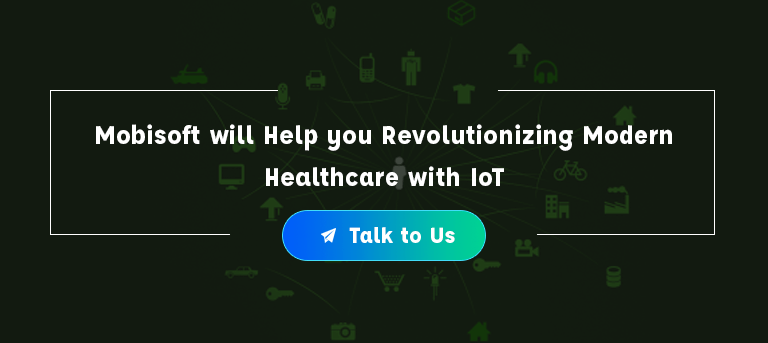
Author's Bio

Shailendra Sinhasane (Shail) is the co-founder and CEO of Mobisoft Infotech. He has been focused on cloud solutions, mobile strategy, cross-platform development, IoT innovations and advising healthcare startups in building scalable products.
